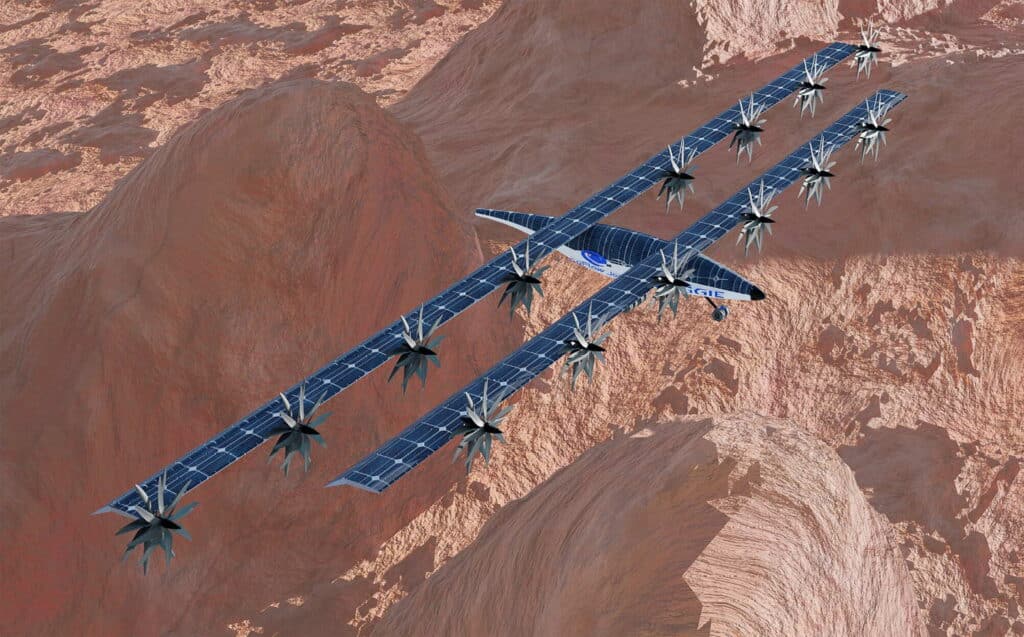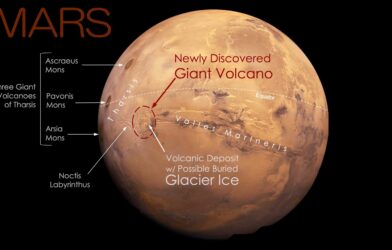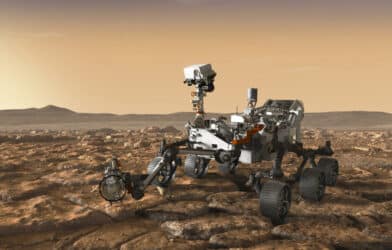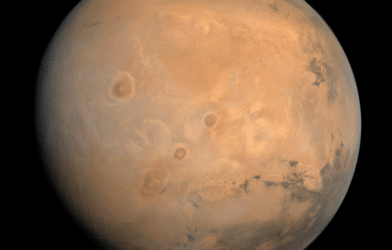NASA has announced its funding for a pioneering Red Planet exploration platform, known as Mars Aerial and Ground Intelligent Explorer (MAGGIE). This innovative concept features a compact fixed-wing aircraft designed to navigate the Martian skies with unprecedented efficiency and versatility.
The space agency announced this month the vehicle was accepted as part of a program to develop innovations to transform future space missions. The electric aircraft will use solar power to fly in the thin Martian atmosphere while scanning the planet’s terrain. Among its many expected missions, developers hope MAGGIE can help pinpoint signs of water on Mars.
The platform’s capabilities are as impressive as its design. With a fully charged battery, MAGGIE can cover a range of 179 km per 7.6 Martian days (sols) at an altitude of 1,000 meters, achieving a total range of over 16,000 km per Martian year (687 Earth days). This extensive range opens up unprecedented opportunities for exploration and scientific discovery.
“MAGGIE would be able to perform the first global-scale atmospheric mission at Mars and revolutionize our capability of exploring almost the entirety of the Martian surface,” writes Ge-Cheng Zha, of Florida-based developers Coflow Jet, in a statement. “It is the first concept to enable ongoing exploration of this region of Mars and would provide a substantial leap in capability for NASA’s exploration of the Red Planet.”
The aircraft will have vertical take-off/landing VTOL capability and would be able to land and recharge its batteries with solar cells on its wings and body.
Mars’ atmosphere is 160x thinner than Earth’s, so MAGGIE has a cruise lift coefficient nearly an order of magnitude higher than conventional subsonic aircraft to overcome the low density.
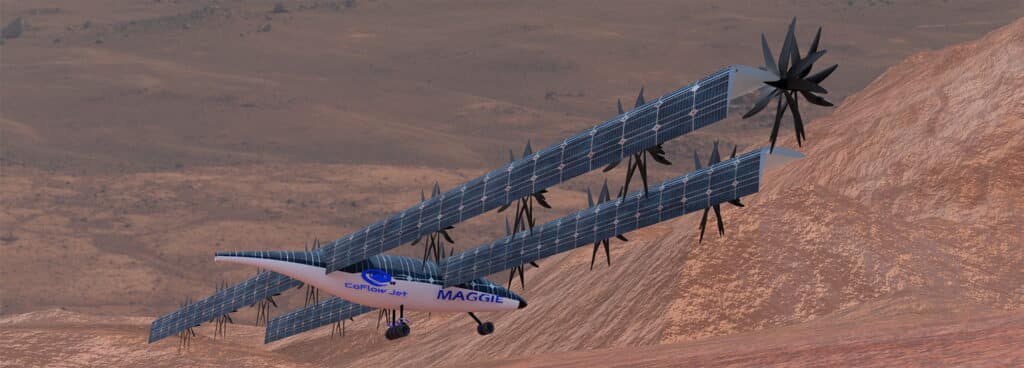
MAGGIE’s proposed mission includes three vital atmospheric and geophysical investigations aligned with the Dynamic Mars science theme. These include studying the Martian core dynamo through its weak magnetic fields, investigating methane signals in Gale crater, and mapping subsurface water ice at high resolutions in the planet’s mid-latitudes. These studies promise to shed new light on Mars’ geology, atmosphere, and potential for life.
While the MAGGIE system is currently in a conceptual phase, early studies indicate its potential. “The conceptual MAGGIE system study indicates that the concept appears to be feasible, but need to be further investigated, designed, and verified under Martian atmospheric conditions in Phase I,” writes Zha.
Beyond its immediate impact on Martian exploration, MAGGIE’s technology holds potential benefits for VTOL aircraft technology on Earth and other planetary bodies, marking a significant leap in aerospace innovation.
NASA says their NIAC (NASA Innovative Advanced Concepts) program fosters pioneering ideas by funding early-stage technology concept studies for future consideration and potential commercialisation.
“The daring missions NASA undertakes for the benefit of humanity all begin as just an idea, and NIAC is responsible for inspiring many of those ideas,” NASA Associate Administrator Jim Free says in a statement. “The Ingenuity helicopter flying on Mars and instruments on the MarCO deep space CubeSats can trace their lineage back to NIAC, proving there is a path from creative idea to mission success.
“And, while not all these concepts will fly, NASA and our partners worldwide can learn from fresh approaches and may eventually use technologies advanced by NIAC.”
South West News Service writer Dean Murray contributed to this report.
